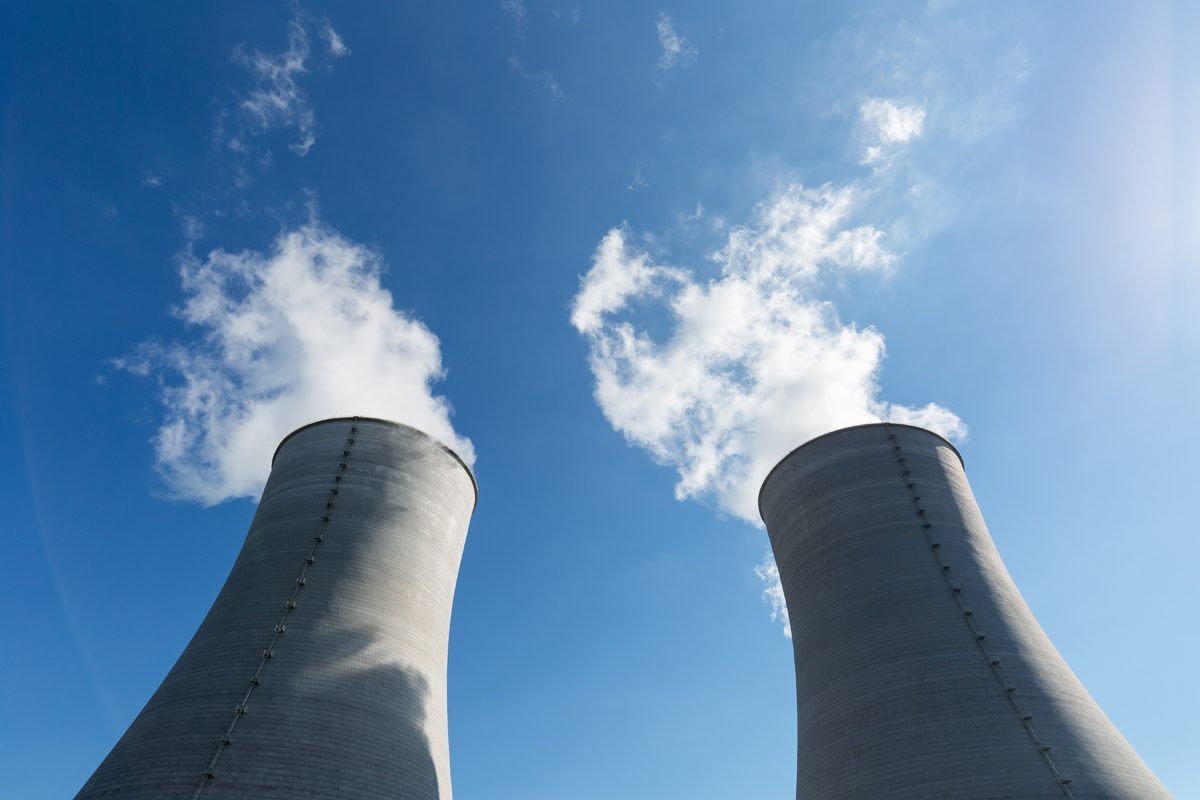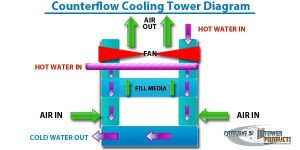Which type of process fluid cooling system is right for your application? When determining whether you need a fluid cooler or a cooling tower, you must consider the desired temperature and operating costs, among other factors. The first step towards making a purchase is knowing the difference between these two models.
What Is A Cooling Tower?
A cooling tower can be thought of as a specialized heat exchanger where water and air meet with the purpose of reducing the temperature of the water. When this happens, a small total of the water evaporates, hence reducing the water temperature that is circulated throughout the tower.
This water is pumped through pipes to the cooling tower. Nozzles are used as the water sprays onto material known as fill that slows the flow of the water as it travels through the cooling tower and maximizes air and water contact. When they meet, a cooling action is created and the cooled water is then pumped back to the processing equipment where it absorbs hear. From there it is pumped back to the cooling tower and obviously, cooled again.
Cooling Tower Types
These cooling towers are used to cool several products and machinery. Despite the various uses and machinery associated with this product, all cooling towers operate in the same way. Evaporative cooling is utilized in all circumstances.
Crossflow Cooling Towers
Because of its design, crossflow cooling towers force the hot process water to flow down the fill media. This is caused simply by the force of gravity. This process takes place at the same time as the air is being blown horizontally across the falling water, which cools it down significantly. The air flow and pattern of the water is where the crossflow model gets its name. Water will require only gravity for downward flow because there is no other present force going against it. Water will then be evenly distributed by the hot water basins located above the fills in the tower.
Counterflow Cooling Towers
Hot process water flows downward on the fill media, continuing its flow all the way onto the cold water basin. The air, though, enters in a lower section of the tower, compared to crossflow versions. From there, air will flow up, passing through the water flowing the fill. The end result here will be a cooling down phase. Pressurized pipes and nozzles are placed further apart than in crossflow towers. This is done to ensure nothing will obstruct airflow to the tower.
Forced Draft Cooling Towers
There are many benefits of using a forced draft cooling tower. And that is exactly why so many industrial plants opt for this model over the other options. Forced draft cooling towers are very powerful, yet economical at the same time. These models will remove low-potential heat that is generated in the production process. A counterflow of air combined with hot water results in a transfer of heat in the cooling fill. Paper and chemical industry plants often prefer to used forced draft cooling towers.
Factory Assembled Cooling Towers
Simple and easy transportation, installation and operation are some of the biggest reasons why plants love factory assembled towers. These versions continue to be extremely popular because they are some of the few towers that can be customized to your specific needs. Generally, these towers are used for HVAC and industrial applications where cooling efficiency is not a priority and space is limited.
Induced Draft Cooling Towers
This version features a fan at the top of tower, pulling the air upward. Fans in induced draft cooling towers then induce the hot, moist air out of the discharge. A powerful exit air velocity reduces any possible recirculation within the tower as the end result. That is the main goal for these models: to eliminate the possibility of any discharged air flowing back into the air intake area.
What Is A Fluid Cooler?
Fluid cooler systems are more commonly used for applications featuring warmer temperatures. These systems consist of copper tubes with aluminum fins and fans, which act as a radiator used to cool the process fluid with ambient air. Typically, the coolest practical leaving fluid temperature is nearly 10 degrees warmer than the air entering these applications.
When compared to cooling towers, fluid cooler systems are not as energy efficient. In addition, these systems will come with a higher initial cost and have a larger footprint. However, once installed, fluid coolers have less maintenance needs and use less water than cooling towers. On average, operating costs of a fluid cooler will fall right between that of a chiller and cooling tower.
Cooling Tower Installation, Replacement, & Refurbishment in Arizona & Nevada
Our team offers complete cooling tower refurbishment that will save your company tens of thousands of dollars over buying and installing new cooling towers. Cooling tower refurbishment and rebuilding adds about another 15 years of life to your equipment and helps you get your money’s worth out of your original investment in your cooling tower or property. We offer cooling tower installation, replacement, and refurbishment in Arizona and Nevada. We also sell other cooling tower parts and products.





